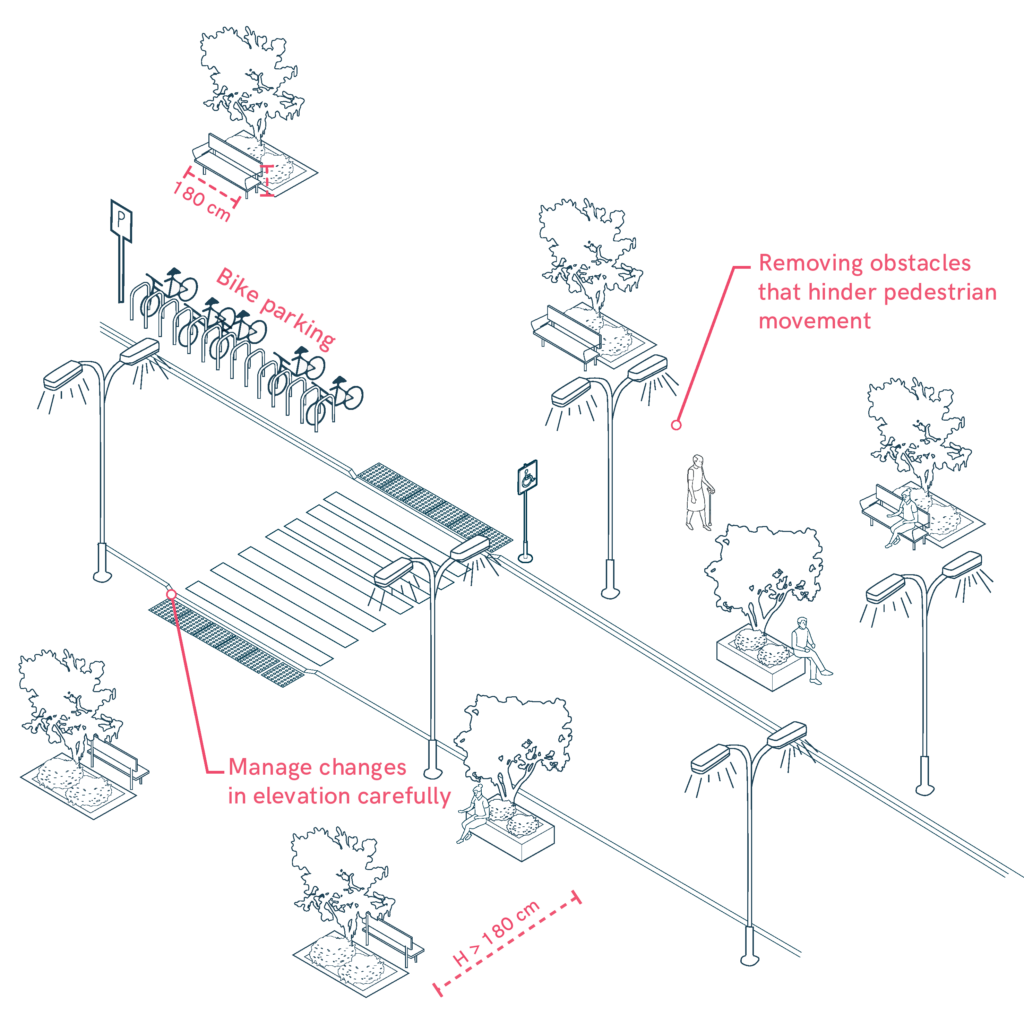Vehicular Ramps and Pedestrian Pathways
Vehicular ramps and pedestrian pathways should be designed to avoid interference with pedestrian movement. Clear crossings, smooth transitions, and obstacle-free paths ensure safety and accessibility for everyone, improving the flow of people throughout urban spaces.

- Keep pedestrian crossings clear, allowing for continuous movement across roads.
- Manage changes in elevation carefully between pedestrian and vehicular pathways.
- Ensure visibility and safety by removing obstacles that hinder pedestrian movement or block sightlines.
- Improve visibility at crosswalks by allowing bike parking on the vehicle-approaching side and maintaining a clear distance of at least 6 meters before the crossing point.
- Vehicular ramps should not interfere with pedestrian pathways.
- Ensure ramps do not coincide with pedestrian-only ramps to maintain safe walking conditions.
Sources
- https://cdn.mitma.gob.es/portal-web-drupal/estudios_y_publicaciones/guia_accesibilidad.pdf
- https://www.une.org/encuentra-tu-norma/busca-tu-norma/norma?c=N0007851
- https://www.une.org/encuentra-tu-norma/busca-tu-norma/norma?c=N0066564
- https://www.une.org/encuentra-tu-norma/busca-tu-norma/norma?c=N0050139
- Carers
- Children
- Cognitive
- Cognitive abilities
- Decolonial perspective
- Digital
- Digital barrier
- Enviroment
- Environmental
- Gender and generations
- Gender perspective
- Hearing impairment
- Low-education
- Low-income
- Older people
- Other
- Physical abilities and features
- Sensory and Physical
- Socioeconomic
- Visual impairment